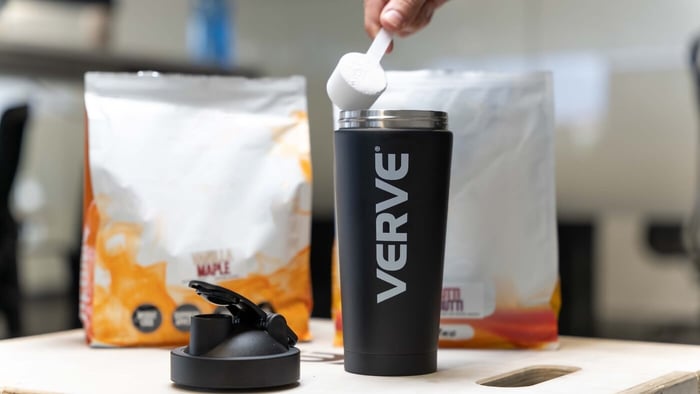Nutrition for pre-training, intra-training and post-training!
A Sports Dietician Guide to power up your gains and nutrition with what to eat and when to eat it.
Tara Kaff, Dietician - Tara is an Accredited Practising Dietitian, Sports Dietitian and Performance Nutritionist. Tara is the Assistant Dietitian for the South Sydney Rabbitohs NRL team and works in private practice helping individuals reach their full potential.
Pre-Training Nutrition
The question I get asked most is, "should I eat before training?" My honest answer is it depends.
What are your goals?
When did you last eat?
Do you feel sick if you eat?
Do you feel lethargic if you don't eat?
How long is your session?
Was it high intensity, or was it just a 25-minute jog?
If you are training for 45 minutes at a high intensity, it can be helpful but not crucial. However, if you're training for 60-90 minutes at a high intensity, I highly recommend optimising your pre-training nutrition.
The general rule of thumb around timings and nutrients is as follows:
2-4 hours before:
This meal is usually a lunch if you're an afternoon trainer. This meal should have a good quality source of carbohydrates, good lean source of protein, moderate amounts of healthy fats and some colour (fruits or veg)
30-60 minutes before:
This meal should be a carbohydrate-rich snack and a small amount of protein. If it's 30 minutes before, I would be focusing on quick-absorbing carbohydrates such as a piece of fruit, fruit toast, crumpets and honey or a high carbohydrate smoothie.
Intra-Training Nutrition
Now, intra-training nutrition is not for everyone. What does intra-nutrition mean? Essentially, it refers to carbohydrates being consumed during your training session to give you that boost of energy.
When do you know whether nutrition during your training session is appropriate?
Sessions or events that last less than 60-90 minutes do not require any additional carbohydrates outside your pre-training and post-training nutrition. Sessions that last more than 90 minutes benefit from a small top-up of carbohydrates, something small like a banana, a few little lollies or a few rice cakes with a bit of honey.
As I am sure we are all aware, everyone is very different. Therefore, the exact amount varies from person to person, dependent on exercise duration and intensity and individual gut tolerances.
Events that last longer than 4 hours, such as ironman, long-distance trail running and ultramarathons, require a significantly individualised, unique fuelling strategy. In these long-duration events, carbohydrates and hydration need a careful strategy. It's highly recommended to see an Accredited Sports Dietitian for an individualised plan if you are undertaking these events.
Multi-day events such as a CrossFit competition require as much but different strategic planning. There are a few factors to consider when looking at competition nutrition.
First, how long are your events?
Second, what is the time between events?
Third, do you have any intolerances?
Fourth, fifth, sixth and so on. There are so many other questions!
The main point to take here is to ensure you are topping your body's carbohydrates between workouts and aiming to get small amounts of protein in during more extended periods between workouts. How much and what type of fuel you need is something to discuss with an Accredited Sports Dietitian.
Post-Training Nutrition
Your recovery meal should be your most important meal of the day! There are four golden rules in recovery nutrition:
- Refuel muscle glycogen (carbohydrate stores)
- Repair muscle (for function & development)
- Rehydrate (replace fluids lost through sweat)
- Rest (amplifies the recovery process)
Additional rule, ALWAYS add some colour: vegetables or fruit. If you are a numbers type of person and want to know the scientifically proven figures to go by, protein should be 0.4/kg and 0.8/kg of carbohydrates. To make it easier, it's a 2:1 ratio. 2 parts carbohydrates to 1 part protein.
Cravings can come from inadequate refuelling. So many people will train hard but not refuel correctly; it's a common mistake I see all too often. The consequences of inadequate refuelling only come 2-3 hours later; they are cravings all the palatable foods underneath the sun. This palatable food tends to be the food that won't serve you, it's just easy to eat, and they tend to be the unhealthier foods.
Nutrient Timing.
If you don't enjoy tracking calories or macros, that is okay, and it's still easy to achieve goals without doing so. However, the way you distribute your carbs, fats and protein-dependent around your training intensity, especially at dinner time, can be of great benefit.
Easy training day - If you have an easy training session such as a brisk walk, a small light job or no training at all, your body won't need to replenish mass amounts of its carbohydrate stores. This means that a small amount of carbohydrates in your meal afterwards is just enough to provide you with the energy you need without overdoing it.
Moderate training day - This macro distribution is appropriate after a moderate training session. For example, a long-distance run, a 60-minute HIIT class or a 60-minute CrossFit class. This meal has more carbohydrates than the meal above because your body burns more carbohydrate stores. Therefore, you must replenish those lost stores of carbs with you guessed it. Carbs!!
Hard training day - This macro distribution is only for the people that train over 60 minutes. This does not mean a 90-minute brisk walk. Instead, this is a high-intensity 90-minute training session that would completely deplete your muscle carbohydrate stores. This large amount of carbohydrates may seem scary to some but is crucial for long duration and high-intensity exercise undertakers.
Activity Time!
We all know calories and macros are the new thing. There are many calculators out there; however, let's hear it first from an accredited sports dietitian.
How to Work Out Your Calorie and Macro Nutrient Targets:
Here is the mathematical part of the game, working out your ideal CALORIC TARGET and MACRONUTRIENT SPLIT. To do this, we will use the Schofield Method (equations taken from Schofield et al. - 1985) to calculate your required intake.
Before we do this, we need three pieces of information about YOU:
1) Your gender
2) Your age
3) Your current weight
Step 1:
We will work out the equation to find your BMR (or Basal Metabolic Rate). Your BMR is a figure determining the minimum number of MJ (megajoules) you need just to live. Think of this as your resting metabolism.
BMR equation for Males:
18-30yrs = (0.063 x weight in kg) + 2.896
30-60yrs = (0.048 x weight) + 3.653
Over 60yrs = (0.049 x weight) + 2.459
BMR equation for Females:
18-30yrs = (0.062 x weight in kg) + 2.036
30-60yrs = (0.034 x weight in kg) + 3.538
Over 60yrs = (0.038 x weight) + 2.755
My BMR: Stats: Female, 26yrs, 68kg (0.062 x 68kg = 4.216) + 2.036 = 6.252MJ
To convert to KJ we x by 1000 = 6,252 KJ
Then to convert this number to Kcal, you divide it by 4.18.
6,252 ÷ 4.18 = 1,495 kcal
This number (your BMR) is the figure that your body needs as a daily MINUMUM, just to maintain life. This is without even moving!
Step 2:
We will further our calculations by adding in your physical activity profile: TDEE (Total Daily Energy Expenditure)
The equation for TDEE is simple:
You will multiply your new BMR number by your Activity Level. Choose one and multiply your BMR by this.
- 1.2 = sedentary (little or no exercise)
- 1.375 = light activity (light exercise/sports 1 to 3 days per week)
- 1.55 = moderate activity (moderate exercise/sports 3 to 5 days per week)
- 1.725 = very active (hard exercise/sports 6 to 7 days per week)
- 1.9 = highly active (very hard exercise/sports 6 to 7 days per week and physical job)
Your BASE figure is the number you start with and can then work from and either slightly reduce or increase depending on your goal. Put simply, if I wanted to lose weight, then I would need to consume LESS than 2,567 calories per day.
If I wanted to gain weight, I would consume more than 2,567 Kcal per day.
Remember all of the variables.
There are ALWAYS variables to these calculations such as sleep, muscle vs fat, activity level changes, medical conditions and stress. Therefore, it is best to approach any calorie reduction with caution and give your body time to adjust to your new intake before making any radical changes. Remember, there are ENDLESS variables! Use this as a journey to learn about YOUR body and wise food choices, don't fixate on your intake only!
Step 3:
Now to work out macronutrient targets:
Protein: 1.6-2.2g/kg of body weight (1g of protein = 4 calories)
Fat: 0.5-1.2g/kg (1g of fat = 9 calories)
Carbohydrates: The rest of the calories from your target (1g = 4 calories)
About Tara
Tara is an Accredited Practising Dietitian, Sports Dietitian and Performance Nutritionist. Tara is the Assistant Dietitian for the South Sydney Rabbitohs NRL team and works in private practice helping individuals reach their full potential.
Tara's goal as a sports dietitian is to assist and guide individuals run choosing the right foods to support their wellbeing. Additionally, she aims to increase their knowledge and understanding around performance-based nutrition, allowing her athletes to implement practical strategies that will see their performance, recovery and overall health accelerate.
For more information visit: www.jtrainathleticperformance.com.au




